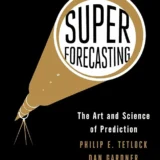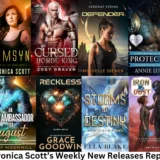
I was going to finish my post about convention name badges, but November sneaked up and caught me unawares, so now I’m in the throes of NaNoWriMoVember! What is NaNoWriMoVember, you ask? Well, it’s my own combination of the National Novel Writing Month and “Mo” (for moustache) vember; I’ve promised to write a 50,000 word novel and grow my “mo” for men’s health. You’re welcome to pledge in support of men’s health and to join us in writing a novel, by the way—here are the links: https://nanowrimo.org for the writer in you (the month is one day short of a week gone, so you’ll have to ramp up really quickly); and for us guys, it’s https://ca.movember.com or https://movember.com. Donations are gratefully accepted for Movember. The photo shown is me on November 1, as clean-shaven as I get these days. I won’t be shaving at all this month. (I’ll probably post pictures on Facebook if you’re interested, every week or two.)
Anyway, I thought maybe some of you might be interested in the process of writing a 50,000 word novel in the span of 30 days. I don’t know how anyone else does it, but here’s what I do. (Many people, including my sister, who is also a genre writer, plot their novel in advance, define their characters and setting, build their worlds; in other words, they prepare with discipline and foresight. I’m not one of them.) I’m not a prolific writer, nor am I a disciplined or fast writer. Even back when our workshops (in Pullman, Washington/Moscow, Idaho it was “Writers’ Bloc,” called the “Moscow Moffia” by Algis (A.J.) Budrys; in Edmonton, Alberta, our group was called “Writers of the Lost, Ink.”) were in full swing, and we had group challenges, such as “Write five short stories in five days,” I was not one of those who could sit down and do all the plotting and so on. I just basically winged it. I’d rack my brain for an idea; more than one if we had a challenge like the above going on. The writing itself isn’t the hard part for me. I’m not a deep, lyrical writer; I’m more the “meat and potatoes” type of guy. Other members of the group, like Nina Kiriki Hoffman, would write subtle, emotional magical stories; Dean Wesley Smith would write clever stories like “Jesus Tended Bar,” and I’d be doing something very workaday. The only thing I can claim is that my first drafts are usually pretty clean as far as spelling and grammar. Oh, well, we do what we can, right?
So I knew NaNoWriMo was coming up, and I knew I needed a plot and characters, so what did I do? I went the quick and dirty route: I decided to write a sequel to my last “novel,” which had been written during the “Three-Day Novel-Writing Competition”—which takes place every year over the Labour Day weekend–more of a novella, really; how much can one write in 3 days anyway? The first book, which was a YA book set in a near-Earth in the early days of the twentieth century, was called Tom Smith and his Electric Skyship, and was a deliberate tribute (at least the name) to the Tom Swift books that were popular during my childhood. In that book, Tom Smith, boy inventor, fought an evil German villain, traveled the sky in marvelous sailing ships of the air and, with his friend Jack Rutledge, rescued a kidnapped United States President. That book ended with a literal bang; I’m planning to release it as an ebook any day now. But since I hinted at sequels in that book, I figured why not use it for NaNoWriMo(Vember)?
So I have thought out a plot—and most of this happened only a few days before NaNoWriMoVember; remember, I’m not as well prepared or disciplined as some—decided on a time frame (a few years after the first book) and set out, in a one-paragraph outline in Notepad, my idea for the book, so as not to violate the NaNo rules and start writing before the first. Here’s where things get complicated (and why I’m a number of pages behind where I should be) as far as Tom Smith and His Electric Time Velocipede are concerned. Since this is a parallel Earth, set in the early years of the twentieth century, I had to decide how markedly the world would diverge from the one we inhabit. Which meant that whatever year I decided on (in this case, 1911) would already have a well-documented timeline that I would need to stay relatively close to. Now, I’m not OCD enough to want to adhere rigourously to the facts; after all, it’s not our Earth, but I want enough of the real timeline to be there, which means I need to research both before and as I write.
And it’s more of a science-fiction book than anything else (not really Steampunk, though it could more or less fall into that category), so it means I must make sure that where I diverge from the rules of reality, I have to justify it somehow. Which means research. So, knowing the time (1911), the city (San Francisco), the characters (Tom Smith and Jack Rutledge) and the plot (can’t tell you that), I sat down in front of my trusty browser and typed “world events 1911” and “San Francisco map 1911.” I got a pretty good timeline to work from, and a couple of maps so I could not only place my protagonists in the city I used to live in and still really love, but what it would be like in 1911.

One of the salient points about this novel is that it concerns air travel, which means that I also needed to be conversant with airplanes and pilots—and their accomplishments—not only in California, but around the world; which meant more research. As any writer who does research knows—especially today, with the internet so handy—it can be very easy to get caught up in the trap of “now I need to know this about that” and to spend your whole time researching, rather than writing. One thing my wife, the beautiful and talented Lynne Taylor Fahnestalk (https://www.smilingdragonflystudio.com) suggested, which I may have to do later, as I am getting at least a little bogged down in research, is to follow the Star Trek writers’ lead and just write ***TECH HERE*** and fill in later, when you’ve got the plot and characters all straightened out. I don’t want to fill my book with either unobtainium or bolognium, even though I have at least one invented element there. But it’s entirely too easy to get sidetracked by technical and historical research.
This book will have to have an appendix pointing to all the wonderful things I found out about 1911 during my research, and an acknowledgement of all the amazing resources I used. Did you know (just for an example) that the very first American woman to receive her pilot’s license (Harriet Quimby) did so in 1911? Did you know that the first airplane to land on a ship did so (on a hastily-constructed deck made just for that purpose) in San FranciscoBay during that period? It was an exciting year for planes and pilots all around the world; the first British air mail was delivered that year as well.
The closer I got to finding out what I needed for specific parts of the book, the more I wanted to diverge and research the things I was finding out for their own sake! I’m sure that more than one writer has been sidetracked into not finishing the work at hand by just that thing. One Facebook post this morning (Thursday, November 7) seems germane: a box of drawings and notes found in someone’s trash at https://www.messynessychic.com/2013/11/06/found-in-the-trash-a-box-of-otherworldly-notes/. Author C.J. Cherryh said that “SF writers and fantasy writers see a lot of these. [That particular] one is distinguished by a very artistic hand and some drafting skill. People make notebooks, either planning a novel, or elaborating some fantasy world.” She continued, “The novels almost never ‘make it’ professionally—J. R.R. Tolkien is the obvious exception—because the essence of a plot gets lost in the bits and bobs of detail, but they are certainly fascinating. One I had a chance to see came complete with models, a small city, a multi-thousand year history, and a connection to Atlantis, as I dimly recall.”
Was this another writer who spent years planning a book but never finishing? It’s tempting to think so. And to hope that my research doesn’t lead me off into some blind alley of “just one more web page” that keeps me from finishing my book. I believe I can do it, and I’ll let you know how I did at the end of the month.
Every writer writes differently. My way of writing is particularly my own; you may be a faster writer, a better writer, a more lyrical writer. Only you can tell what kind of writer you are or want to be; you alone can determine that by what you accomplish. It’s easy to say “I want to be a writer,” and harder to actually write. And finish what you started. If you plan to join me either in NaNoWriMoVember or just in becoming a SF/F writer, I’d be happy to hear what works for you; please let me know!
As always, if you have any comments about this column, you can register—if you haven’t already—and comment here on the Amazing Stories website, or you can comment on Facebook. Till next week, grow your “mo”!
Steve has been an active fan since the 1970s, when he founded the Palouse Empire Science Fiction Association and the more-or-less late MosCon in Pullman, WA and Moscow, ID, though he started reading SF/F in the early-to-mid 1950s, when he was just a sprat. He moved to Canada in 1985 and quickly became involved with Canadian cons, including ConText (’89 and ’81) and VCON. He’s published a couple of books and a number of short stories, and has collaborated with his two-time Aurora-winning wife Lynne Taylor Fahnestalk on a number of art projects. As of this writing he’s the proofreader for R. Graeme Cameron’s Polar Borealis and Polar Starlight publications. He’s been writing for Amazing Stories off and on since the early 1980s. His column can be found on Amazing Stories most Fridays.









